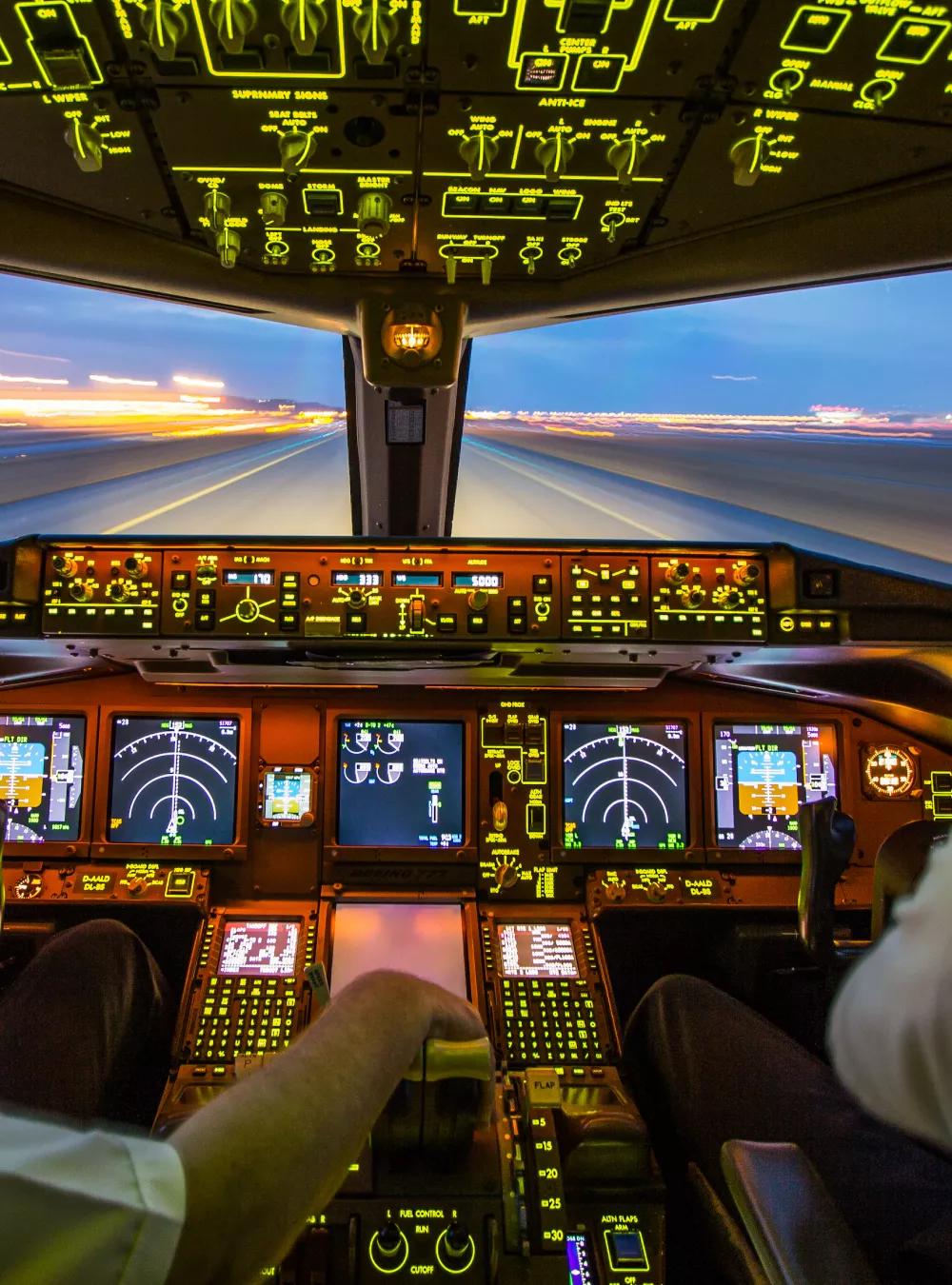As our skies fill with increasingly diverse vehicles, aircraft will need to exchange data with each other and the multiple entities that manage their flights—in real time—for safety and efficiency. MITRE is working to make that possible.

The Connected Aircraft: An Agent of Change
The aerospace industry is transforming before our eyes.
Soon, drones will deliver packages to our doorsteps. Air taxis will deliver CEOs to meetings across town. And commercially operated rockets will regularly transit the airspace on their way to space. Adding to this complexity, different organizations will be responsible for the flight of different types of airspace users.
Safely enabling this complex array of operations—from the Earth’s surface to space—will require a fully interconnected system. MITRE is working with the Federal Aviation Administration (FAA) to make that vision a reality, starting with the “connected aircraft.”
Expanding Information Exchange to Increase Situational Awareness
There’s a lot going on in the National Airspace System (NAS), from vehicle movements and developing weather patterns to changing conditions on the ground. Operators need up-to-date awareness of all of it to fly safely and efficiently.
Today, most aviation communications occur within an aviation-specific communication infrastructure. However, if aviation used commercial broadband communications services, it would be possible to establish many more connections between systems and vehicles. This would vastly expand the amount and type of data that can be shared—and it would happen faster.
That idea is at the core of our connected aircraft work.
“When we talk about the connected aircraft, we’re describing futuristic aircraft—both manned and unmanned—that would be able to exchange a wide array of strategic information with other aircraft and with air traffic control facilities in real time, using wireless mechanisms,” says Will Symionow, who leads MITRE’s work on achieving the FAA’s connected aircraft vision.
“Aircraft would also be able to exchange information with a variety of other entities, such as the organizations responsible for coordinating unmanned aircraft system or commercial space operations.”
Moreover, pilots currently rely primarily on instructions from air traffic controllers to guide their operations. Even that process is segmented, with different facilities and controllers managing different regions. Tomorrow, the pilot of a connected aircraft will be able to interact with information sources beyond a specific controller sector to build a complete picture of the flight’s planned path, rather than disconnected segments.
The overall vision is even broader. For instance, pilots may be able to directly access information on airspace constraints or runway closures at their arrival airport, without the need to confer with an air traffic controller.
Pilots might also receive feeds from the National Oceanic and Atmospheric Administration for up-to-the-minute weather information. They might get notifications of nearby activity by air taxis or low-altitude drones from the entities that coordinate those operations. They could even receive alerts from space vehicles making emergency reentries into low-Earth orbit.
With the enhanced situational awareness the connected aircraft would provide, flying will be safer and more efficient.
WATCH: Enabling the Connected Aircraft of Tomorrow
Multipronged Research Effort Brings the Connected Aircraft into Focus
MITRE, which operates the FAA’s federally funded research and development center, is conducting multiple lines of research to accelerate this transformational shift. We’re exploring ways:
- Aviation might tap into the power of commercial communication infrastructures to create a common real-time picture of NAS operations.
- Autonomous systems could rely on the situational awareness this “now-cast” provides to safely operate in the airspace.
- Piggybacking onto commercial sector communication structures could reduce the FAA’s communication costs.
Additionally, since mobile technologies such as tablets and smartphones are now commonplace in aircraft, we’re exploring how they might be used in other ways—for instance, how mobile applications might enable improved departure time planning for business jet operators. And we’re researching how mobile devices could provide pilots with the information they need to maintain precise spacing between their own and other aircraft.
We’re also exploring how our Digital Copilot™ capability—developed to give solo private pilots an automated second pair of eyes in the cockpit—might be adapted to the airline industry.
The connected aircraft is just one example of the power of open data sharing to revolutionize aerospace operations. Ultimately, MITRE and the FAA envision that all systems, vehicles, and regulatory entities will be interconnected. As the operations of new types of vehicles expand, ubiquitous information exchange will become crucial to the safety and efficiency of the entire aerospace system.